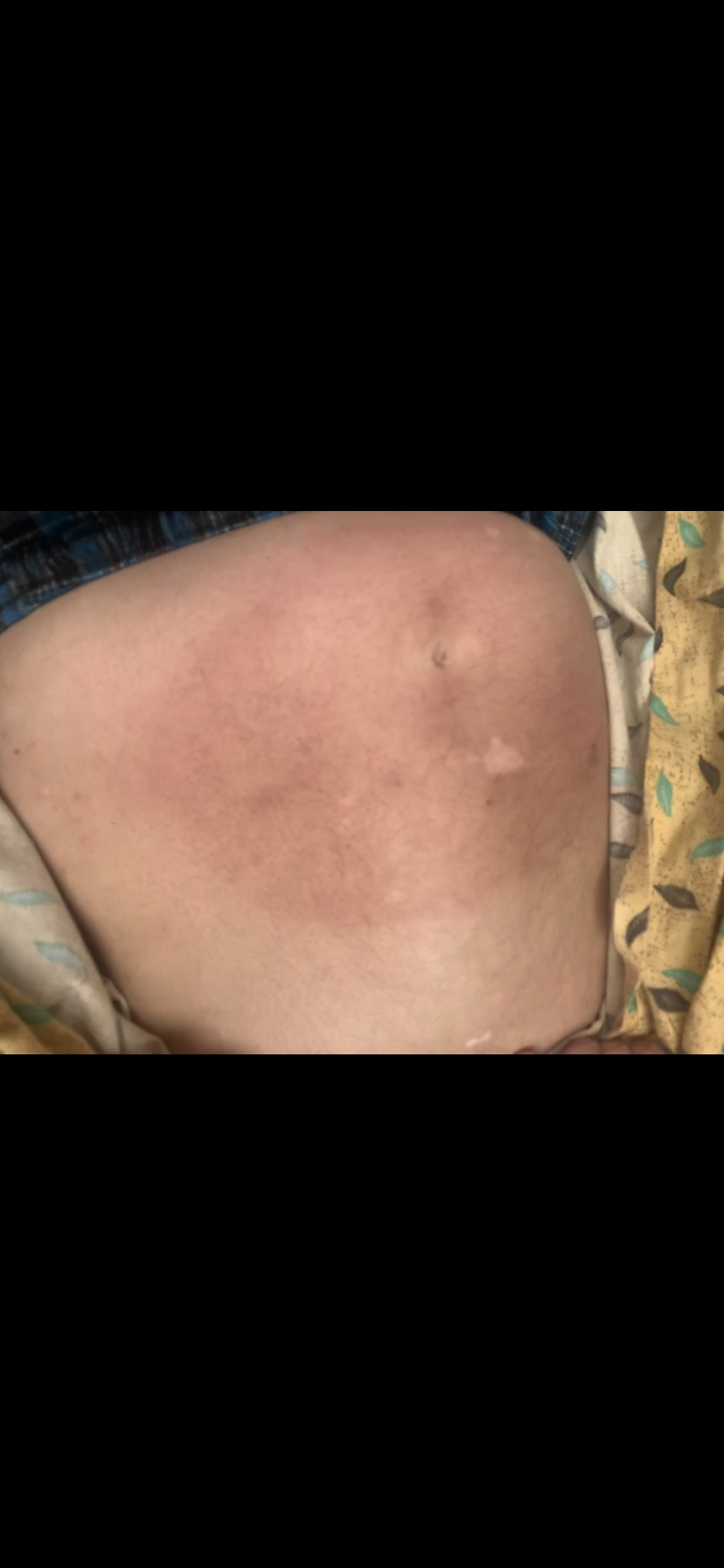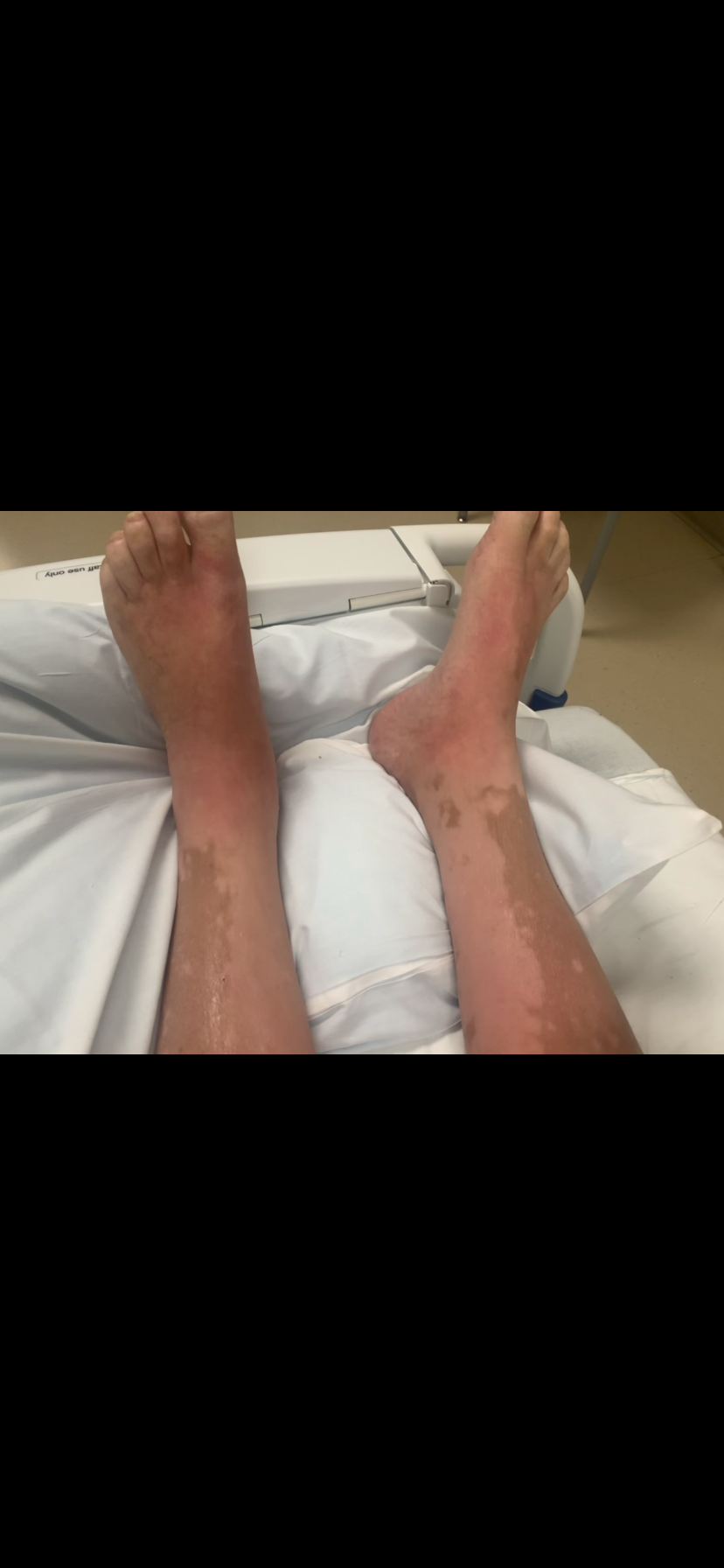Case Presentation: Mr. B.R. is a 60 year-old man with a past medical history of coronary artery disease and alcoholic cirrhosis who presented with acute onset abdominal and bilateral lower extremity rash. The rash became increasingly erythematous, pruritic and painful within the course of a few days. Patient denied having fever, chills, or body aches. Patient had a well-demarcated circular erythematous patch with trace central clearing encompassing his umbilicus, which was warm to touch but not tender. The dorsal aspect of bilateral feet had diffuse erythema with significant hyperalgesia, and the rash extended proximally to mid shin bilaterally with minimal pitting edema. CBC showed thrombocytosis of 590,000, baseline around 150,000. Patient was initially treated for decompensated liver cirrhosis and bilateral lower extremity cellulitis with IV furosemide, PO spironolactone and IV cefazolin. He had no improvement of his presenting symptoms the next day. Due to lack of response to treatment, lack of fever and leukocytosis, other differential diagnosis were considered including idiopathic erythromelalgia Type I with associated thrombocytosis. Dermatology evaluated the patient and confirmed the diagnosis. Antibiotics were discontinued and patient was started on ice packs and leg elevation with improvement of symptoms. He was referred to hematology on discharge for further evaluation for myeloproliferative disorders as erythromelalgia can be the presenting symptom of these disorders.
Discussion: The distinction between cellulitis and other erythematous and painful skin complaints is not always clear. While cellulitis is more common in prevalence, it is important to keep the rarer etiologies in mind particularly when the presentation is not classic of cellulitis. Differential diagnosis might include cellulitis, stasis dermatitis, drug eruption, lymphedema and erythromelalgia. A distinguishing feature for erythromelalgia is the hyperalgesia to light touch and intermittent episodes with complete resolution in between. This patient had similar episodes a few times in the past with spontaneous resolution. Mr. B.R. also had a history of coronary artery disease and vasculopathy which increase his risk of erythromelalgia as it is thought to contribute to its pathogenesis.
Conclusions: Erythromelalgia is a rare syndrome, more common in women than men, and it mainly affects lower extremities and less so, upper extremities. It rarely occurs in other areas like the face and trunk. Mr. B.R. had the rash in bilateral lower extremities and the abdomen which is a less common site. The exacerbating factor in this case is believed to be lack of adherence to salt/fluid restriction leading to increased edema, rather than the typical triggers of increased temperature and exercise. This case is relevant for primary care physicians and hospitalists as it stresses the importance of a broad differential for bilateral lower extremity erythema and avoiding the unnecessary use of antibiotics when cellulitis is unlikely, thus decreasing the risk of adverse medication effects. The combination of symmetrical erythematous lower extremity rash with associated warmth and hyperalgesia should lead to the consideration of erythromelalgia. When patients present with this constellation of symptoms and are also prone to developing edema, management should focus on reducing swelling in addition to standard cooling measures and pain control to avoid acute exacerbation of erythromelalgia.


